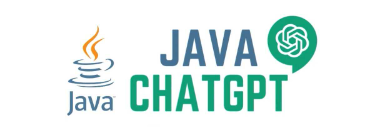 ET Online
ET OnlineAmit Maheshwari, Partner, AKM Global: A PPF account matures after 15 years from the end of the financial year in which it is opened. Taxpayers prefer investing in the PPF as it falls in the exempt-exempt-exempt (EEE) category, which means the principal, interest earned and maturity amount are taxfree. On maturity, taxpayers can go for partial or full withdrawal, or extend the account for another five years. If you continue for another five years and withdraw equal amounts of interest every year, the interest amount will be wholly exempt from tax under Section 10(11) of the Income-tax Act, 1961. However, if you decide to withdraw from the PPF and invest Rs 15 lakh each in the Senior Citizens’ Savings Scheme along with your spouse, the interest earned on such accounts shall be exempt under Section 80TTB of the Act up to Rs 50,000, applicable to each taxpayer. The interest on the PPF account, however, shall be exempt without any limit. Conversely, the deposit in the SCSS would be clubbed with the interest income from other sources for tax calculation, with the exemption limit of Rs 50,000. Hence, based on your tax situation, you can pick the suitable option.
Budget with ET
Vidya Bala, Co-Founder, PrimeInvestor.in: If you are a legal heir, there will be capital gains and you need to deposit the money in a capital gains account to claim deduction by reinvesting in a property in subsequent financial years. However, the nature of your investment will depend on how long you are going to park it before you invest in a property. If you are looking at less than five years, your return expectation is very tough to meet, and you cannot take risks through equity. If you have at least a three-year time frame, you can consider hybrid funds, such as balanced advantage funds and equity savings funds, considering their superior tax treatment over debt. However, if your time frame is one-two years, it is best to safely park these in fixed deposits as capital preservation will be important, considering your goal.
I am 66 years old and want to retire. My monthly take-home pay is Rs 2 lakh. I have five properties worth Rs 5 crore, SCSS deposits of Rs 60 lakh and post office deposits of Rs 15 lakh. I have medical cover of Rs 20 lakh. I don’t have any mutual funds or equities. I can sell two properties for Rs 3 crore. Can I sustain myself in retirement with this corpus?
Rushabh Desai, Founder, Rupee With Rushabh Investment Services: Your conservative asset allocation is appropriate for your age. However, average rental yields in India are about 2-5%, which is lower than fixed income yields of 7% and above. You may keep one property based on your requirements, and can consider investing 20-30% of your portfolio in equity mutual funds to beat inflation. Consider this if you have a minimum 5-7 year time horizon and can stomach volatility. You can look at investing in a large-cap index fund like UTI Nifty 50. The best way to generate a steady monthly income is via systematic withdrawal plans (SWP). Start an SWP in equity mutual funds after 1-3 years, once you earn decent profits. With your overall portfolio asset allocation of 70% in fixed income and 30% in equity, you can comfortably withdraw your current salary of Rs 2 lakh, assuming a life expectancy of 85 years. In the fixed income space, you can consider debt mutual funds as they can generate better risk-adjusted returns.
I am 43 years old and my son is 2.5 years old. My monthly income is Rs 1.4 lakh and expenses are Rs 90,000 a month. I have SIPs worth Rs 35,000. My mutual fund corpus is Rs 50 lakh and EPF corpus is Rs 26 lakh. I have Rs 4 lakh in savings account, gold bonds of Rs 2 lakh and tax-free bonds of Rs 3 lakh. I have Rs 1 crore term insurance. I don’t have a house, am paying a rent of Rs 36,000, and have no debt. I have medical insurance of Rs 7.5 lakh. I plan to retire at 55. How much corpus should I have?
Adhil Shetty, CEO, BankBazaar: We are assuming that your mutual funds are all equity; all investments will mature in 2036; annual returns are 13% on equity, 7.5% on debt, 6% on gold, and 4% on savings; average inflation rate is 6%; and your income will grow 10% annually. Your goals are retirement in 12 years, housing, and child’s education. By 2036, your inflation-adjusted monthly expenses will be Rs 1.81 lakh, your income will be Rs 4.39 lakh, and the value of existing investments will be Rs 4.17 crore. Of this, your SIPs should add `1.21 crore, but with an annual SIP hike of 10%, you can save Rs 1.87 crore, taking the corpus to Rs 4.83 crore. If we apply the 300x rule, you must save Rs 5.43 crore. So, this plan helps you achieve 89% of your goal. The alternatives are to invest more or have lower income expectations in retirement. For example, if your retirement income need is 75% of the current income requirement, a corpus of `4.07 crore suffices. The challenges to sustained retirement come from inflation, so renting may not be viable in retirement. You must solve your housing problem and invest separately for your child’s education costs during your work life. Equity will remain your best bet for all long-term goals.
Ask our experts
Have a question for the experts? etwealth@timesgroup.com
(Catch all the Personal Finance News, Breaking News, Budget 2024 Events and Latest News Updates on The Economic Times.)
Subscribe to The Economic Times Prime and read the ET ePaper online.
Read More News on
(Catch all the Personal Finance News, Breaking News, Budget 2024 Events and Latest News Updates on The Economic Times.)
Subscribe to The Economic Times Prime and read the ET ePaper online.









































 Get Unlimited Access to The Economic Times
Get Unlimited Access to The Economic Times
